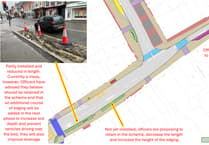The Labour government has recently raised concerns about the lack of infrastructure, so I am encouraged to see that the question of how local councils collect and spend developer contributions is increasingly in the public eye.
In Waverley, we are dealing with the well-publicised Community Infrastructure Levy (CIL) “scandal,” where homeowners are still fighting to have huge charges removed from their properties.
This has also shone a spotlight on the vast sums of developer contributions sitting unspent (and partially unallocated) in Waverley’s accounts.
Waverley has confirmed it is holding £32 million of Section 106 (S106) funds and CIL as of March 25, of which £24.6 million is CIL. £11 million of this CIL remains unallocated for infrastructure projects this year.
This issue is not unique to Waverley. The Home Builders Federation estimates that councils across England and Wales are holding over £8 billion of developer contributions: £6 billion from Section 106 agreements and almost £2 billion raised through CIL.
While these balances sit, they are accruing very significant amounts of interest. CIL regulations require that contributions themselves are ringfenced for infrastructure, but they are silent on what should happen to the interest. Most S106 agreements specify that interest is ringfenced alongside the capital, thus adding to the capital available.
So, what happens to this CIL interest? The answer is that it flows directly into councils’ “general funds”, supporting day-to-day operations.
Until very recently, Waverley did not even track this interest separately. After persistent questioning from our Conservative group, the council has now published figures showing that the “theoretical interest” earned on unspent CIL in 2024/25 was £970,330. (The money is real – it is only the calculation method that is described as “theoretical.”)
To put that into perspective, £970,330 equates to nearly 8 percent of Waverley’s annual council tax income. That level of CIL interest, in my view, distorts the council’s true financial picture. Without it, the outlook would be much worse.
For the month of August 2025 alone, Waverley estimates its present £27.7 million CIL balance generated £107,262 in interest – up from £103,211 in July, and rising month after month.
So, one must ask: what incentive does any council really have to spend CIL balances, when leaving them untouched provides such a lifeline to its main spending budget?
What Waverley is doing is legal, in line with accounting practices, and justified under councils’ “best value” duty. But we know that some other councils take a different approach – they ringfence the interest as well as the contributions.
And here lies the crux of the problem: money supporting day-to-day operations is money not being spent on infrastructure. Yet infrastructure is exactly what we need. Labour has doubled Waverley and Guildford’s housing targets to 1,481 and 1,170 homes per year respectively.
So, I ask: shouldn’t the interest on CIL balances also be ringfenced for infrastructure? Developers pay these contributions in good faith for schools, GP surgeries and roads – not to subsidise council running costs. Absorbing the interest into a council’s general fund may be legal, but I don’t believe it is morally right.
Sir Jeremy Hunt MP and I have already raised this with the Housing Minister, Matthew Pennycook MP.
Locally, following pressure from our Conservative group, Waverley’s Executive has at least renamed the committee, and we hope it will now consider allocating CIL more efficiently and strategically.
We will continue to raise this in the council chamber, because if we are serious about delivering the infrastructure our communities desperately need, then we believe Waverley’s CIL practices must urgently change.





Comments
This article has no comments yet. Be the first to leave a comment.